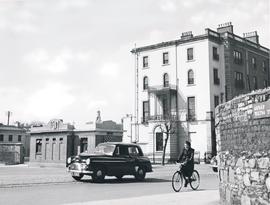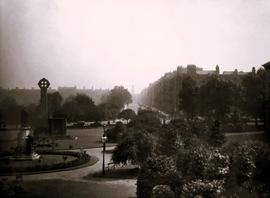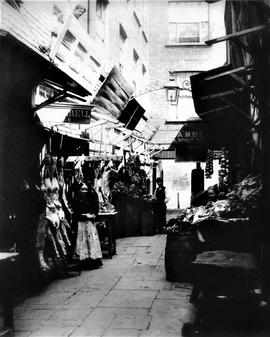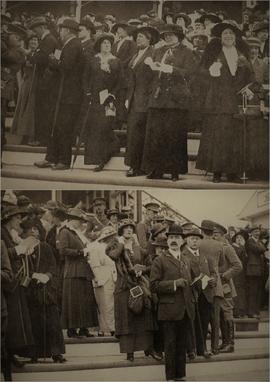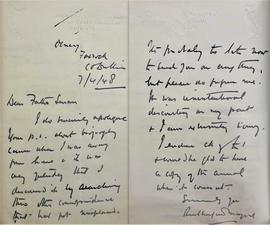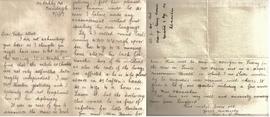A clipping of two photographs showing the crowds in attendance at Leopardstown Racecourse in Dublin in May 1915. The images were published in the ‘Irish Life’ magazine (7 May 1915). The original captions read (upper) ‘In the front, Marchioness Conyngham consulting her programme, on her right Mrs Faudel Philips, and on her left Miss Beatrice Murphy and (lower) ‘In the members’ enclosure watching the start’. The ‘Marchioness Conyngham’ referred to in the caption is Frances Elizabeth Conyngham (1862-1939), the widow of Henry Francis Conyngham, 4th Marquess Conyngham (1857-1897), of Slane Castle in County Meath. Marchioness Conyngham’s eldest son, Victor George Conyngham (5th Marquess), was a lieutenant in the South Irish Horse, a cavalry battalion of the Royal Irish Regiment which was deployed to the Western Front during the Great War. He survived the fighting but was stricken with pneumonia in the trenches, and died on 9 November 1918, at the age of 35, just two days before the Armistice. He was chronologically the last of the forty-two British parliamentarians who died during the war (he sat in the House of Lords as an Irish Peer). (Volume page 197).


